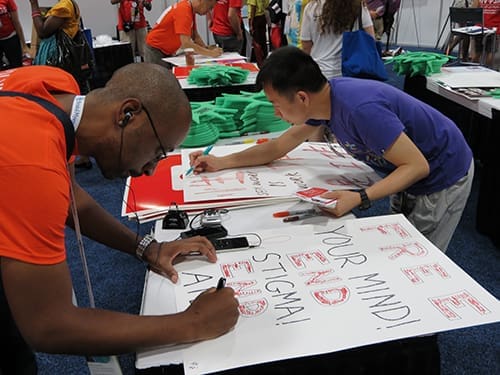By Bailey Williams
For those of us who write, it is necessary to scrutinize not only the truth of what we speak, but the truth of that language by which we speak it. – Audre Lorde
A few weeks after George Floyd was killed in Minneapolis and protests galvanized the nation, the Associated Press Stylebook—the language and style guide most news outlets and many others use in written communications—finally updated its entry on the word “Black,” capitalizing the “B” when referring to people. Though this update was important, it came years after Black communities spoke up about this issue.
In 2014, Lori Tharps, an assistant professor of journalism at Temple University wrote in the New York Times about the importance of capitalizing “Black,” explaining that this issue dates to the 1920s. It was then she writes that W.E.B. Du Bois launched a campaign “demanding that book publishers, newspaper editors and magazines capitalize the N in Negro when referring to Black people,” because at the time, that was the name used to refer to the race. Capitalizing the first letter was simply a matter of respect.
Following in Du Bois’ footsteps, Lori started a petition in 2014 that garnered more than 200 signatures, asking for publications to capitalize “Black” when used to refer to Black people. Though the AP Stylebook is updated every other year, it did not make that change until 2020.
The Limitations of Solely Following AP Style
Many traditional news outlets rely on the AP Stylebook to guide their editorial decisions, and many nonprofits have followed that example, using the AP Stylebook as a tool to create consistency in their communications. The problem with that lies in the speed at which the AP Stylebook updates its entries on specific communities if it does so at all.
By following language and style guidance that’s out-of-touch with the communities you serve, you risk delivering harmful, disrespectful messages that over time can damage your relationship and prevent the sharing of resources and information that could improve or save a life.
That’s why AIDS Foundation Chicago (AFC) developed its own Style Guide more than 20 years ago, in keeping first with the main community the organization served, people living with HIV and AIDS. Though AFC follows AP Style when our own Style Guide doesn’t have advice on a topic, we seek feedback from our core communities to guide our written communications about them. Our language about people living with HIV, people of color, LGBTQ+ people, and people who experience housing insecurity prioritizes input from those communities, knowing that sometimes the AP Stylebook does not have it right.
How We Center the Communities We Serve in our Style Guide
The process for updating AFC’s Style Guide has changed over time, but under my leadership as the manager of the Style Guide, I have increased the frequency and speed in which we make community-informed updates.
First, I, a community member, staff, or another individual will point to a needed update in our Style Guide. I then conduct research using the pre-existing and thorough guides available online (listed below) and write a suggested entry. I then present my research and proposed update to the Communications Team, who can offer feedback, ask questions, and vote on the update. Nothing is published without the entire team’s approval.
Depending on the nature of the entry, I also sometimes present proposed updates to AFC’s Race and Social Justice Committee, which is formed of staff who are from various communities we serve. They also review the suggested entry, hear previously provided feedback and make recommendations with an intersectional, social justice-focused approach for AFC’s specific communities. After I receive everyone’s recommendations, I update the Style Guide within the week.
A Case Study and Resource for Other Organizations
One recent example of this process in action is the update I made around the acronym “BIPOC” which stands for Black, Indigenous, and people of color. I first developed an entry, inspired by The Diversity Style Guide, that was voted on by the Communications team, but because it dealt with some of AFC’s core communities, I also brought the entry to the Race and Social Justice Committee.
It was there that a few members noted that older adults and several other community members were less familiar with that term than people of color. Still, the term was growing in usage amongst some Black, Indigenous and people of color, so the Style Guide entry recommends if one uses the newer term BIPOC to define it on first reference, so that everyone is on the same page. AFC still uses people of color, as well, because it is language that many in our community use, recognize and understand.
This extensive process might not be available to every organization, so last year, we put our Style Guide online. It is not set in stone and it may not be perfect, but we are committed to updating it to reflect and be affirming of the communities we serve, with feedback from those communities. If you have a suggestion for our Style Guide, please reach out to me with the subject line “AFC Style Guide” at [email protected].
The Editor’s Desk is a new series, written by Bailey Williams (she/her/hers), AFC’s Communications Specialist, who manages and writes original content for AFC’s blog Inside Story. The series aims to share knowledge and reflections that come up while managing the blog with the hopes of creating a new dialogue, resource-sharing and added transparency behind our editorial decisions.
Style guides Bailey has found helpful and inspirational include The Diversity Style Guide, The Trans Journalist Association Style Guide and The National Association of Black Journalists.


